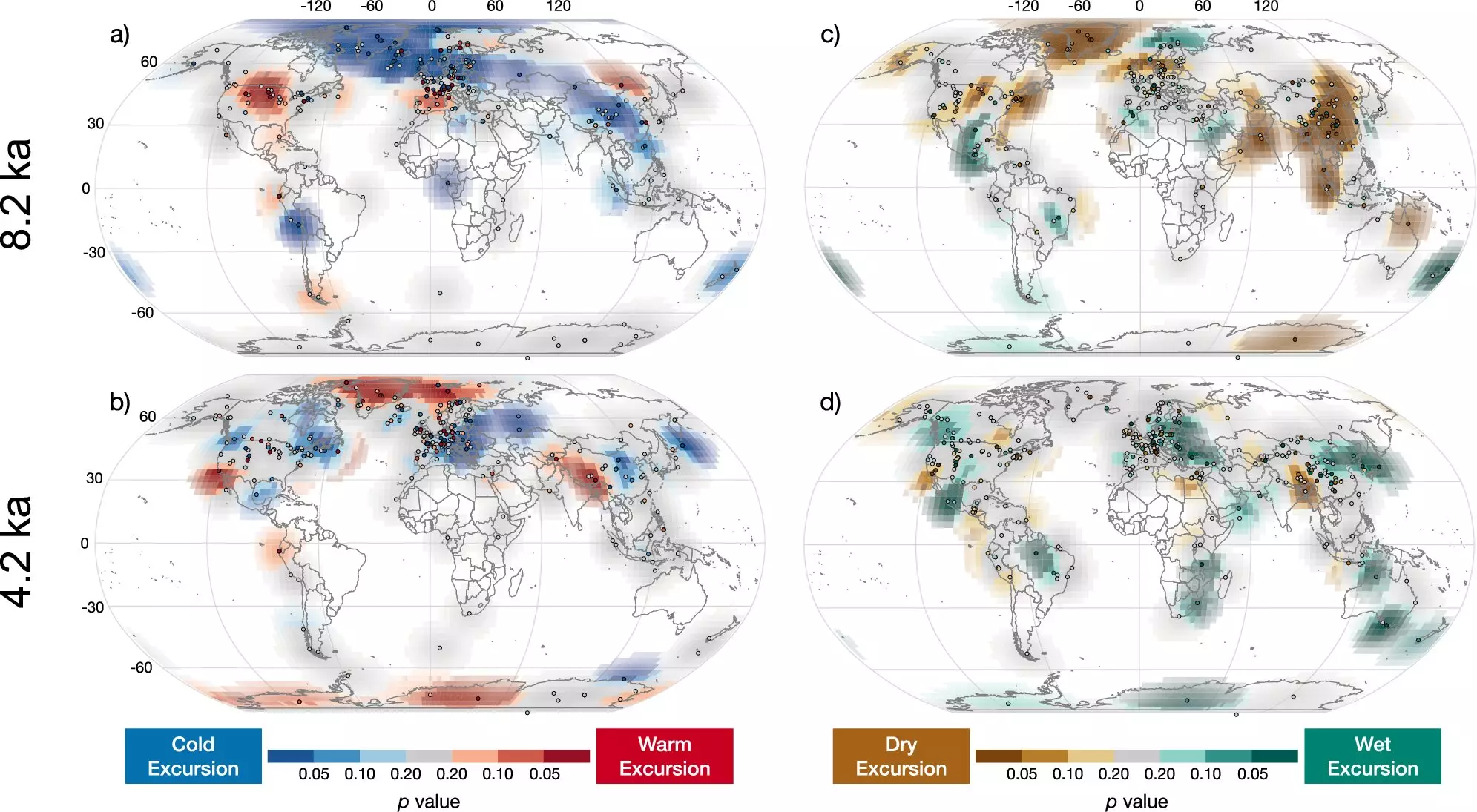Millions of years ago, climate dynamics governed the planet’s ecosystems and influenced the rise and fall of civilizations. One particularly notable event, the megadrought of approximately 4,200 years ago, has long been cited as a crucial period that led to the collapse of ancient empires. Recently, however, research from Northern Arizona University (NAU) has called into question the catastrophic implications previously attached to this event, suggesting that it was less of an apocalyptic marker and more of an episode in a long series of climate fluctuations across the Holocene epoch.
The Holocene epoch, beginning roughly 11,700 years ago, encompasses an extensive period of climate variability. While the epochs prior were characterized by pronounced and singular shifts in climate, such as the glaciation of the Pleistocene, the Holocene presents a more nuanced landscape of climate patterns. The climatic shifts within this era varied widely across geographical boundaries, raising questions about the interconnectedness of these changes and their implications for humanity’s past and future.
In light of the new study, it becomes crucial to interrogate the previously accepted narratives surrounding the 4.2 ka megadrought. The initial perceptions of a singular significant event may have oversimplified the complex realities of climate impacts during this epoch.
A Novel Approach to Researching Climate Events
The NAU study distinguishes itself not just through its findings, but through its innovative approach to research. With more than 1,000 climate datasets at their disposal, the faculty developed a course allowing graduate students to engage deeply with the data. This collaborative educational model not only enhances student understanding but also enriches the depth of the research conducted.
Lead author Nicholas McKay articulated the necessity of digging deeper into these climatic narratives, highlighting the complexity of establishing the 4.2 ka event as a definitive geological marker. This study underscores the importance of critical analysis and methodical scrutiny of large sets of climate data in developing a more comprehensive understanding of historical climatic events.
As the research team sifted through the extensive climate datasets, a shift in understanding emerged. Instead of witnessing a singular catastrophic drought event, data revealed that localized climate changes occurred throughout the Holocene. McKay noted that the impacts of the 4.2 ka megadrought were not consistently felt across the globe, and where they were observed, repercussions varied significantly from one region to another.
This discovery throws into doubt the previous acceptances of the 4.2 ka event as a definitive global climate marker, suggesting instead that local environmental conditions often shaped climatic realities. In some regions, significant events such as the 8.2 ka cooling, the Dark Ages Cold Period, and the Medieval Climate Anomaly emerged as equally critical benchmarks for understanding historical climate variability.
The implications of this research extend well beyond the past. Understanding the patterns of climate variability throughout the Holocene provides valuable insights into contemporary climate change and its future trajectory. This study underscores the inherent variability of climate: changes can manifest over relatively short periods (200 to 400 years) in localized regions without reverberating globally.
Highlighting the distinction between natural climate fluctuations and the extensive anthropogenic changes currently altering our planet’s climate systems is vital. While the research shows a spectrum of natural climate variability, it also serves as a reminder that human activities are now driving unprecedented changes that could disrupt established climate patterns.
In reflecting on the findings from NAU, it is clear that our understanding of historical climate events must evolve with ongoing research. The 4.2 ka megadrought, though impactful in certain areas, may not warrant the alarm previously ascribed to it as a global phenomenon. This nuanced understanding encourages scholars and scientists to adopt a more skeptical lens when interpreting local climate changes, compelling them to explore and analyze the broader climatic context.
As researchers continue to publish methodologies and findings, the possibility for improved climate modeling and predictive capabilities builds. Rethinking significant historical markers such as the 4.2 ka event is crucial for not only preserving historical accuracy but also effectively addressing the challenges posed by modern-day climate change. In doing so, we become better equipped to face the potential climate variations that await us in the future.


Leave a Reply